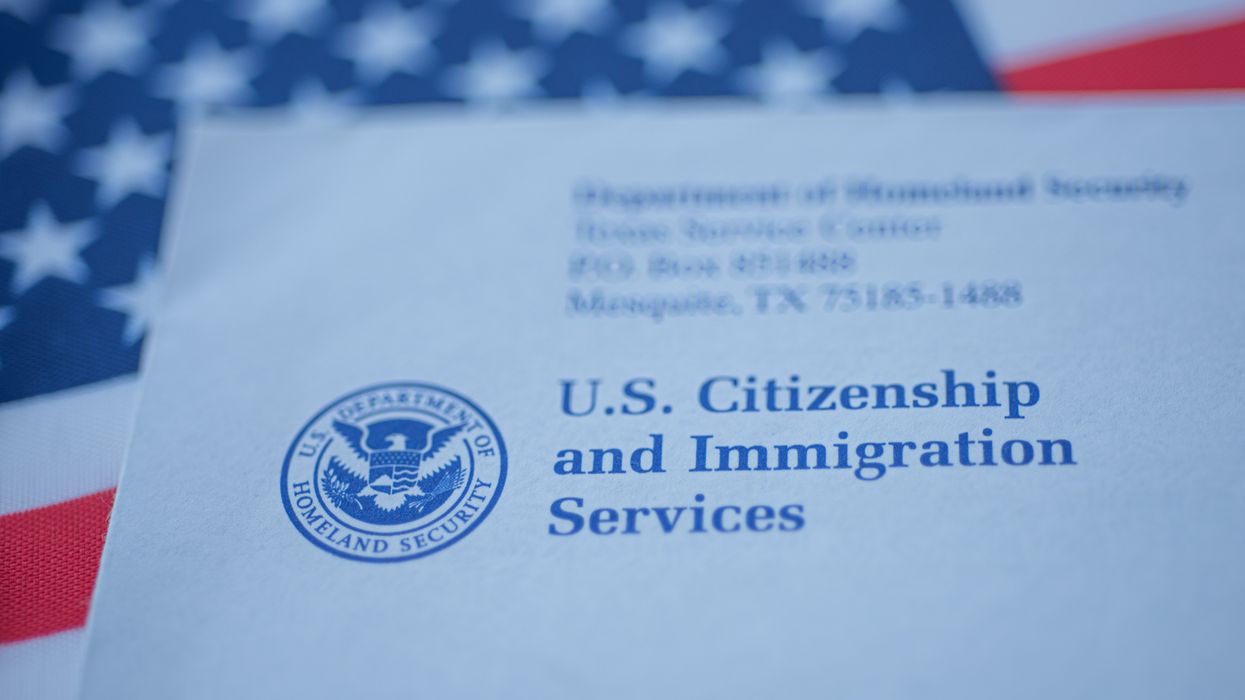The U.S. Supreme Court unanimously ruled recently that Maryland resident Kilmar Abrego Garcia must be released and returned to his family. He was wrongfully deported to the high-security prison in El Salvador based on what the Trump administration calls an “administrative error.”
However, during a recent visit to the Oval Office with President Donald Trump, El Salvadoran President Nayib Bukele stated that he will not return Abrego Garcia, echoing sentiments expressed by Trump and his administration.
This is a rare moment of a U.S. president openly defying a Supreme Court order. But, the Immigration and Customs Enforcement’s actions – such as claiming immigrants do not deserve due process as well as the targeting of documented, legal residents and international students – are not unprecedented at all.
Rather, this is just the latest chapter in a white supremacist history of immigration and citizenship in the U.S., which is disinformation at its worst because America has never been just a white country. Racist attempts throughout U.S. history to declare white supremacy as triumphant have all ultimately failed.
This is even as federal websites are scraped of mentions of diverse leaders, Black history books have been banned, and recently, the U.S. Naval Academy banned close to 400 books of history that violate orders to remove mentions of diversity, equity, and inclusion. Schools, universities, and colleges face significant funding cuts if they do not discontinue their Diversity, Equity, and Inclusion (DEI) policies and curricula.
Yet despite this recorded factual history, many Americans still believe that this country has historically been white. This may be stating the obvious, but Black and indigenous groups have been a part of this country’s cultural fabric for centuries longer than whites. But even that is not the full story.
While Hispanic and Asian groups are often characterized as newcomers to this country, members of such ethnic and racial groups have been on American soil for centuries, some with roots as far back as the 1600s.
During the westward expansion of the U.S. following the Louisiana Purchase in 1803, and the Treaty of Guadalupe Hidalgo in 1848, a large number of indigenous, Hispanic, and Asian residents of that land became “American” not because they came to America, but because America came to them.
It feels ridiculous to remind people that the story of immigration to America is not just the story of Europeans coming across the Atlantic, but also groups who went across the Pacific or through the Caribbean, many of whom were Asian, Hispanic, or African.
As described in the 2024 book "Diversity in America"by Vincent Parillo and the 2022 book "Almost All Aliens: Immigration, Race, and Colonialism in American History and Identity"by Paul Spickard and colleagues, America has never been a country dominated by whites.
Prior to the Revolutionary War and for much of America’s early history, Federal immigration laws were relatively loose, particularly for European immigrant groups in the 1700s and 1800s.
For many European families that arrived through Ellis Island, paperwork such as visas, permits, and green cards was often nonexistent. But over time, racist laws and immigration quotas specifically targeted non-white groups’ arrival to America while leaving Europeans a relatively easier pathway to immigration.
The Naturalization Act of 1790 explicitly stated that only a “free white person” could become a citizen. This was followed by laws such as the Naturalization Act of 1870, the Chinese Exclusion Act of 1882, the Emergency Quota Act of 1921, and the Immigration Act of 1924, all of which placed restrictions on immigrants from non-white countries.
Explicit racism defined America’s immigration policies until the Immigration and Naturalization Act of 1965, the first policy that removed rather than instated racial barriers in immigration.
Whiteness has been central in determining who could become a citizen and a full-fledged member of American society. Native Americans were barred from full citizenship until the Indian Citizenship Act of 1924, and Black Americans did not gain equal citizenship and legal rights until after the Civil Rights movement.
Then, non-white immigrants who met the standards of legality and time of residence were barred from citizenship. In the cases Ozawa vs United States (1922) and Thind vs United States (1923), the Supreme Court ruled that Japanese and Indian immigrants could not become naturalized citizens because they did not meet the standards of “white.”
Notably, the court applied inconsistent logic across these cases in the service of protecting these racist standards.
As Reece Jones describes in the 2022 book White Borders, punitive immigration law and citizenship restrictions have historically been tied to protecting white supremacy. This history is paralleled today; anti-immigration members of the White House administrations such as Steve Bannon and Stephen Miller have described immigration as a “great replacement” which threatens a “white genocide.”
Today, while explicitly racist laws regarding immigration and citizenship have been relegated to history, inequalities remain. Research shows that there are tangible differences in the naturalization acceptance of different immigrant groups, with non-white and Hispanic applicants being less likely to be approved than white applicants.
Additionally, the odds of being approved for citizenship drop significantly for immigrants in majority-white counties.
To be sure, Americans today are not responsible for the racist sins of the country’s past. Still, much of the current discourse that supports the current administration’s treatment of immigrants is rooted in claims such as, “My family came here the right way!” or “This has always been a white country!”
Here is a reminder that the U.S. has been very diverse for centuries, but non-whites were barred from equal immigration laws and fully participating in U.S. democracy as citizens. The actions of the current administration are certainly shocking, but it is only the latest chapter of historical and ongoing white supremacy in immigration and citizenship.
It is time to stop the ongoing white dominant narrative and close the book on racism in this country for good.
Dr. Neeraj Rajaseka r is an assistant professor of sociology at the University of Illinois-Springfield and a Public Voices Fellow with The OpEd Project.




















